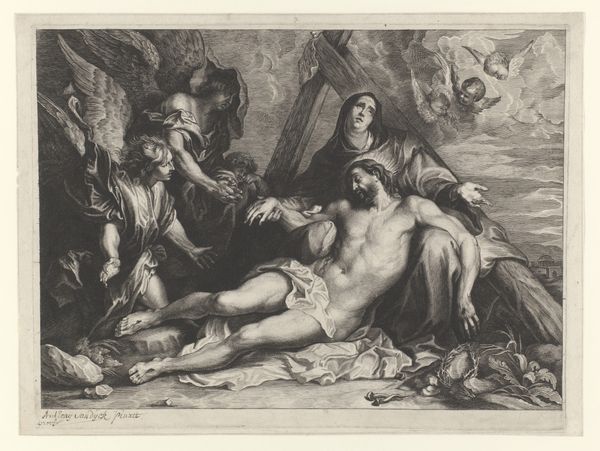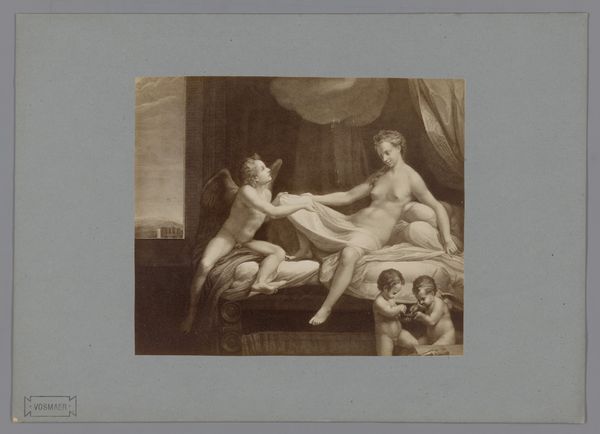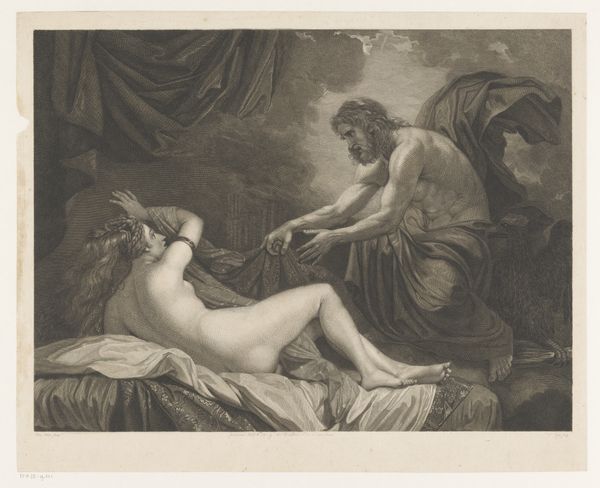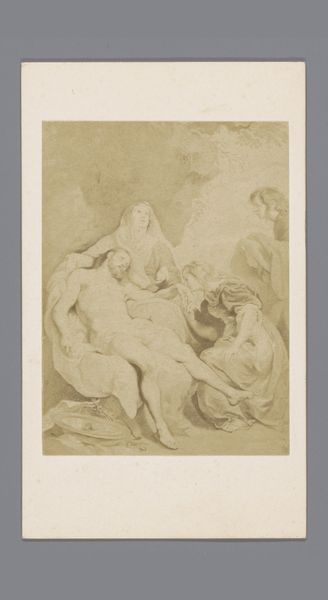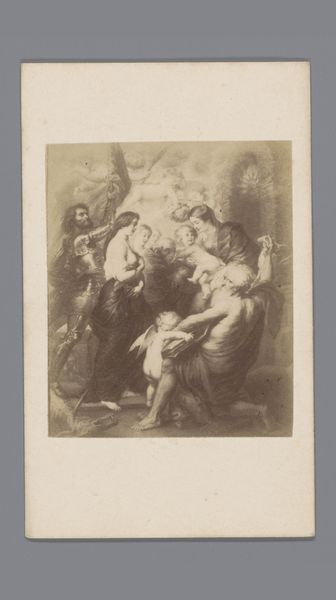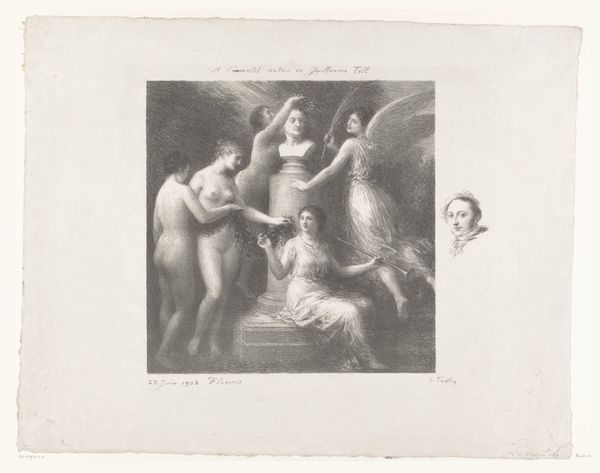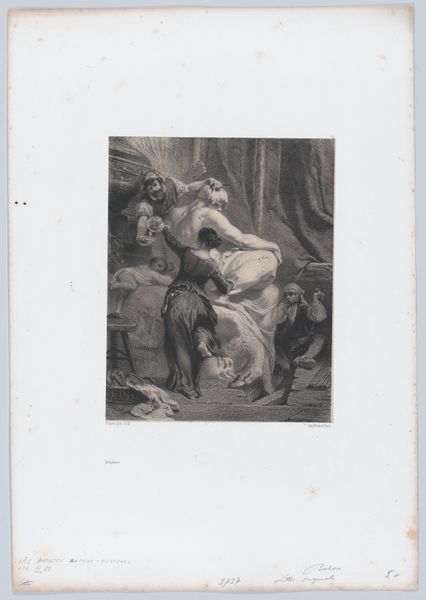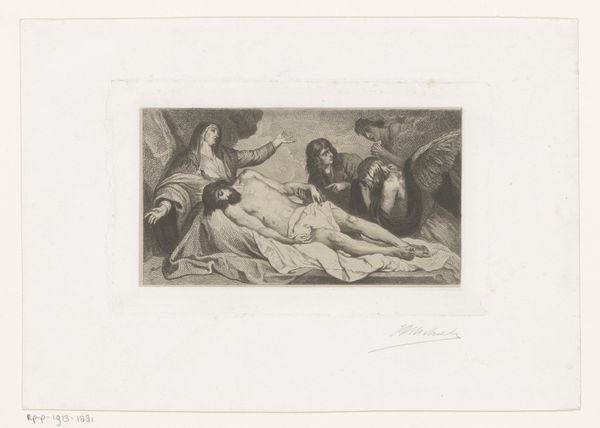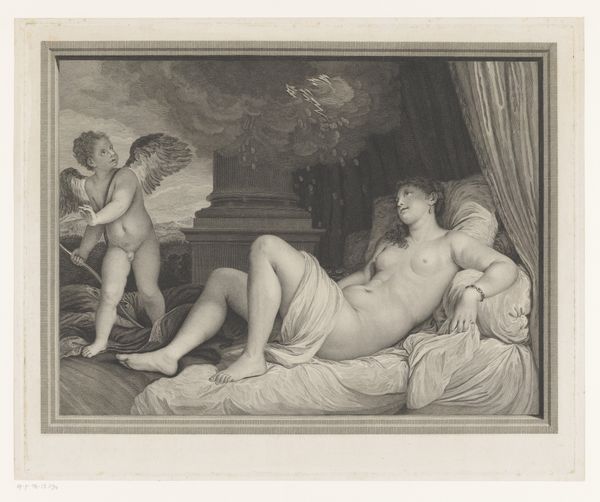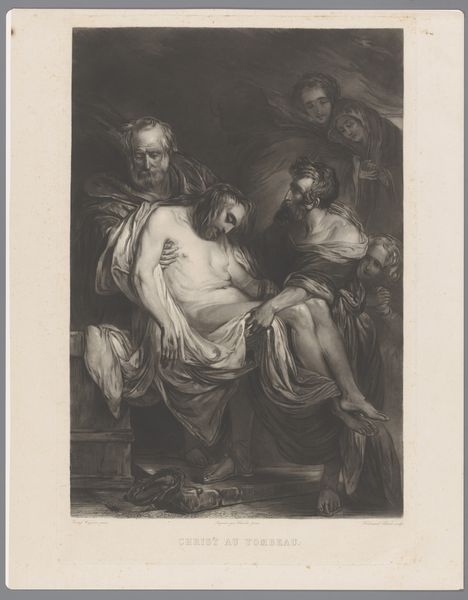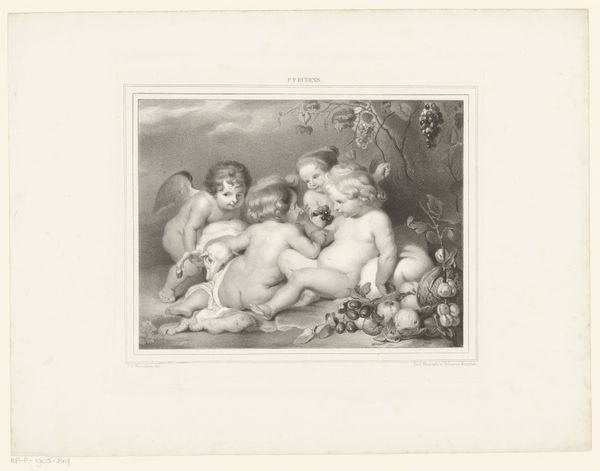
Fotoreproductie van een gravure van De bewening van Christus, naar Anthony van Dyck 1858 - 1866
0:00
0:00
anonymous
Rijksmuseum
Dimensions: height 64 mm, width 106 mm
Copyright: Rijks Museum: Open Domain
Editor: This is a photo reproduction of an engraving of "The Lamentation of Christ," after Anthony van Dyck, dating from around 1858 to 1866. It's quite moving. The monochromatic palette emphasizes the starkness and grief. What catches your eye as you examine the composition? Curator: Indeed, the limited tonal range creates a compelling study in light and shadow. Note how the engraver skillfully utilizes line density to articulate form and emotion. Observe the descending diagonal from the weeping figures at right, across the body of Christ, to the gesturing Mary, a compositional technique that guides the viewer's eye and underscores the scene's pathos. Editor: The dynamic lines and dramatic contrasts give it a real Baroque flair, don't they? What would you say is most crucial to notice in the engraving's method? Curator: Pay close attention to the varied textures achieved through different engraving techniques: the soft, atmospheric clouds versus the precise, detailed rendering of Christ's body. Also, the emotional content conveyed purely through formal means. Van Dyck's original conception translated into line and tone exemplifies a powerful manipulation of form. Editor: That’s a very helpful point. The engraver’s conscious use of line to mimic painting effects is clearer now. It is so carefully constructed. Curator: Precisely! The adaptation from paint to print invites close scrutiny of technique. The engraver used their skill to capture the emotional intention through a strict selection of structural items. Editor: Thank you; I now have a deeper insight into both the original painting and the printmaking practices of the period. Curator: A close formal analysis can always reveal new perspectives. The key is to observe with purpose.
Comments
No comments
Be the first to comment and join the conversation on the ultimate creative platform.
